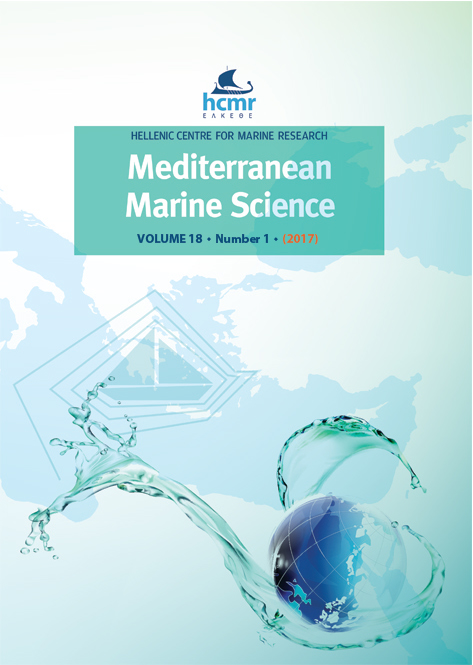Assessment of coastal fish assemblages before the establishment of a new marine protected area in central Mediterranean: its role in formulating zoning proposal
Περίληψη
The fish assemblages of the coastal area of the promontory of Cape Milazzo (Italy, Central Mediterranean), which has been recently designated by the Italian Law to become a national marine protected area (MPA), were characterized by visual censuses carried out over different habitats (rocky algal reef, Posidonia oceanica meadow and soft bottom) and depth ranges (0-3, 4-7, 12-16 and 24-30 m) to identify areas of major concern for the MPA zoning. The study area was divided into 6 sectors to assess spatial-related differences in the assemblage parameters, such as species composition and richness, and the size structure of species of recreational (e.g. SCUBA diving) interest. Fifty-eight taxa (56 species and 2 genera) and 20 families of fishes were totally recorded. Species composition was significantly affected by habitat and depth, whereas no significant changes were detected among sectors. Conversely, species richness and total density of fish showed no significant differences among sectors, habitat types and depth ranges. The majority of species of recreational value was recorded only off the northwestern part of the promontory. The implementation of fishing ban in such an area, characterized by the presence of a rocky bank, would contribute to the recovery of populations of some emblematic species (e.g. groupers and other large predator) and to the enhancement of environmentally sustainable activities such as scuba diving. Throughout the investigated area and, especially, in the eastern and southwestern coasts of the promontory, several species were almost exclusively represented by small and medium sized individuals, a likely consequence of an intense fishing pressure.
Λεπτομέρειες άρθρου
- Πώς να δημιουργήσετε Αναφορές
-
LA MESA, G., SALVATI, E., AGNESI, S., & TUNESI, L. (2017). Assessment of coastal fish assemblages before the establishment of a new marine protected area in central Mediterranean: its role in formulating zoning proposal. Mediterranean Marine Science, 18(1), 11–21. https://doi.org/10.12681/mms.1788
- Τεύχος
- Τόμ. 18 Αρ. 1 (2017)
- Ενότητα
- Research Article
Authors who publish with this journal agree to the following terms:
- Authors retain copyright and grant the journal right of first publication with the work simultaneously licensed under a Creative Commons Attribution Non-Commercial License that allows others to share the work with an acknowledgement of the work's authorship and initial publication in this journal.
- Authors are able to enter into separate, additional contractual arrangements for the non-exclusive distribution of the journal's published version of the work (e.g. post it to an institutional repository or publish it in a book), with an acknowledgement of its initial publication in this journal.
- Authors are permitted and encouraged to post their work online (preferably in institutional repositories or on their website) prior to and during the submission process, as it can lead to productive exchanges, as well as earlier and greater citation of published work (See The Effect of Open Access).






